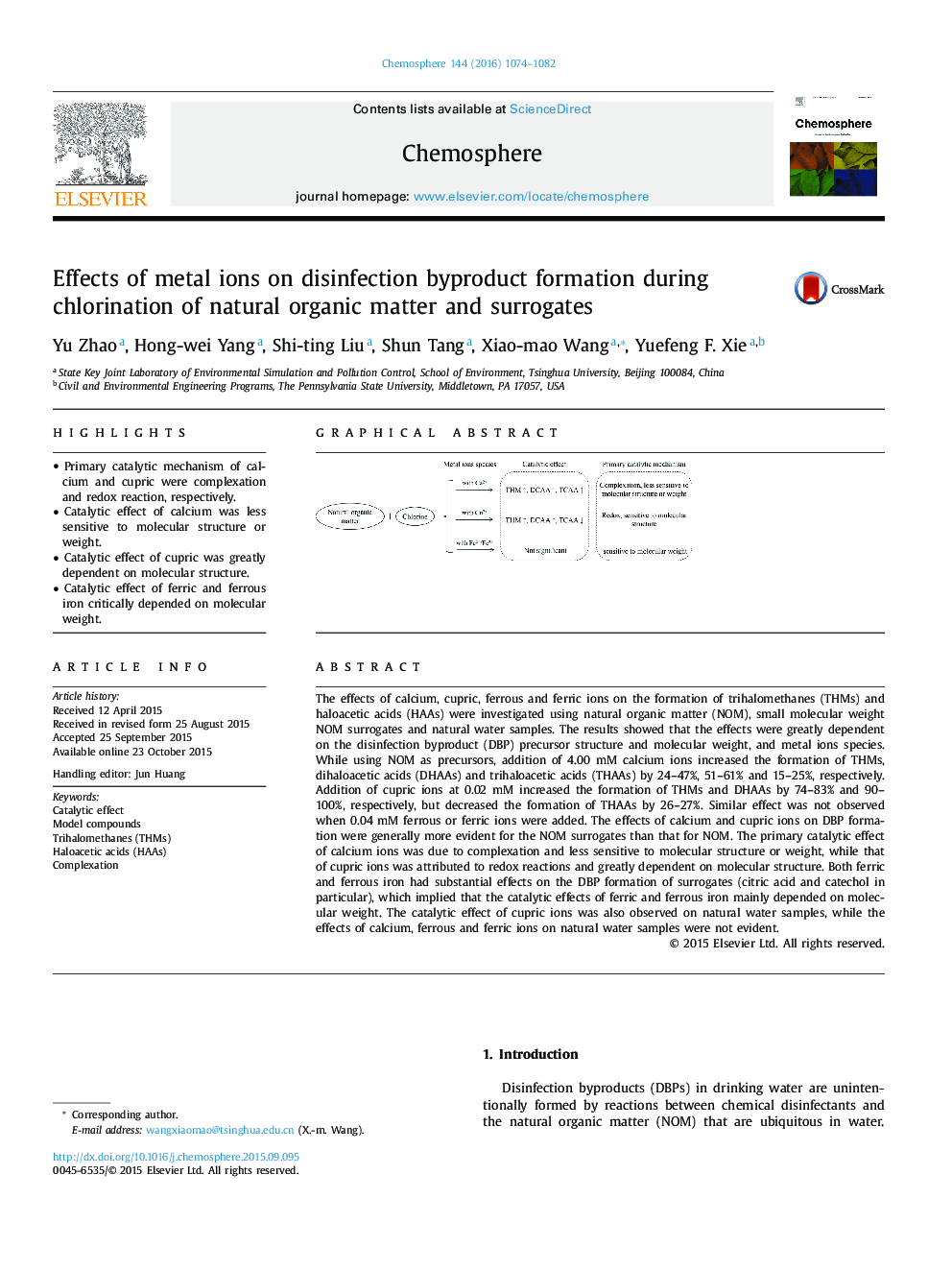| کد مقاله | کد نشریه | سال انتشار | مقاله انگلیسی | نسخه تمام متن |
|---|---|---|---|---|
| 6307183 | 1618827 | 2016 | 9 صفحه PDF | دانلود رایگان |
- Primary catalytic mechanism of calcium and cupric were complexation and redox reaction, respectively.
- Catalytic effect of calcium was less sensitive to molecular structure or weight.
- Catalytic effect of cupric was greatly dependent on molecular structure.
- Catalytic effect of ferric and ferrous iron critically depended on molecular weight.
The effects of calcium, cupric, ferrous and ferric ions on the formation of trihalomethanes (THMs) and haloacetic acids (HAAs) were investigated using natural organic matter (NOM), small molecular weight NOM surrogates and natural water samples. The results showed that the effects were greatly dependent on the disinfection byproduct (DBP) precursor structure and molecular weight, and metal ions species. While using NOM as precursors, addition of 4.00Â mM calcium ions increased the formation of THMs, dihaloacetic acids (DHAAs) and trihaloacetic acids (THAAs) by 24-47%, 51-61% and 15-25%, respectively. Addition of cupric ions at 0.02Â mM increased the formation of THMs and DHAAs by 74-83% and 90-100%, respectively, but decreased the formation of THAAs by 26-27%. Similar effect was not observed when 0.04Â mM ferrous or ferric ions were added. The effects of calcium and cupric ions on DBP formation were generally more evident for the NOM surrogates than that for NOM. The primary catalytic effect of calcium ions was due to complexation and less sensitive to molecular structure or weight, while that of cupric ions was attributed to redox reactions and greatly dependent on molecular structure. Both ferric and ferrous iron had substantial effects on the DBP formation of surrogates (citric acid and catechol in particular), which implied that the catalytic effects of ferric and ferrous iron mainly depended on molecular weight. The catalytic effect of cupric ions was also observed on natural water samples, while the effects of calcium, ferrous and ferric ions on natural water samples were not evident.
121
Journal: Chemosphere - Volume 144, February 2016, Pages 1074-1082
